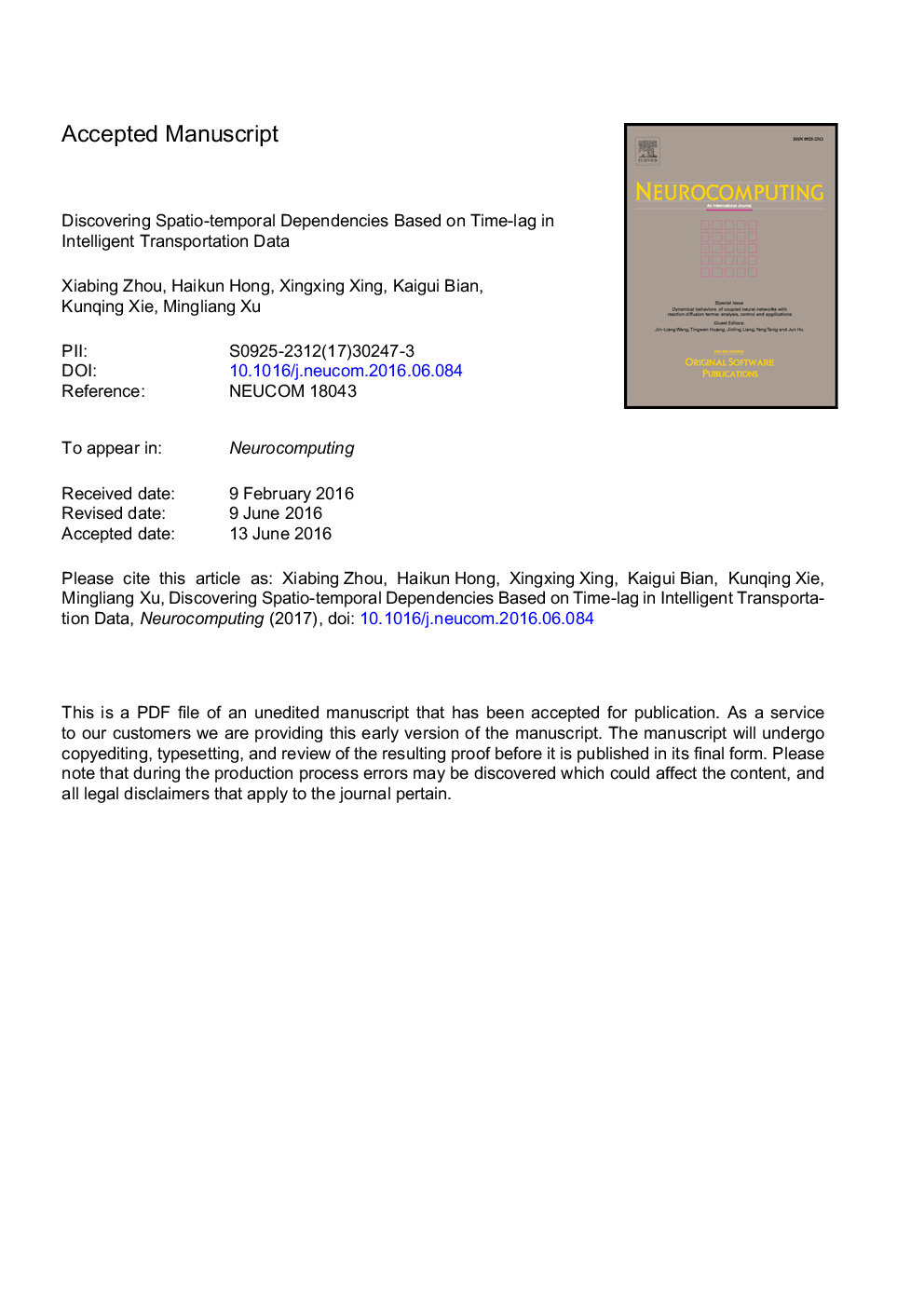| Article ID | Journal | Published Year | Pages | File Type |
|---|---|---|---|---|
| 4947200 | Neurocomputing | 2017 | 26 Pages |
Abstract
Learning spatio-temporal dependency structure is meaningful to characterize causal or statistical relationships. In many real-world applications, dependency structure is often characterized by time-lag between variables. For example, traffic system and climate, time lag is a key feature of hidden temporal dependencies, and plays an essential role in interpreting the cause of discovered temporal dependencies. However, traditional dependencies learning algorithms only use the same time stamp data of variables. In this paper, we propose a method for mining dependencies by considering the time lag. The proposed approach is based on a decomposition of the coefficients into products of two-level hierarchical coefficients, where one represents feature-level and the other represents time-level. Specially, we capture the prior information of time lag in intelligent transportation data. We construct a probabilistic formulation by applying some probabilistic priors to these hierarchical coefficients, and devise an expectation-maximization (EM) algorithm to learn the model parameters. We evaluate our model on both synthetic and real-world highway traffic datasets. Experimental results show the effectiveness of our method.
Keywords
Related Topics
Physical Sciences and Engineering
Computer Science
Artificial Intelligence
Authors
Xiabing Zhou, Haikun Hong, Xingxing Xing, Kaigui Bian, Kunqing Xie, Mingliang Xu,
